Yesterday, we kicked off our next science unit, which is all about the chemistry of ODORS!
To get the 6th grade scientists immediately thinking when they walked into the classroom Wednesday morning at 8 AM, I had hid McDonald’s hashbrowns in hopes that the scientists would notice that the room had a different odor than usual. Some of the scientists remarked, “it smells weird” when they walked in, and some didn’t really notice. Luckily, I had come prepared in case the odor wasn’t strong enough. I had the scientists close their eyes and began spraying a substance near each of the corners in the classroom. Almost immediately, I began hearing things like, “that smells awful”, “oh I can for sure smell that”, “ewwwwww” (it was a bleach cleaning spray).
This lead to our first ever “Science Talk” to get our scientists thinking about odors more.
A science talk is when the scientists sit in a circle and discuss their thoughts on a scientific phenomena. We use a talking piece so only the individual who is holding the piece is allowed to speak. Once they are done, they pass it to the next individual who has something to say. The kids do pretty much all of the talking and driving of the conversation, which is a pretty incredible thing to witness!
During this science talk, we discussed our thoughts and ideas on how and why we can smell odors and why certain odors smell stronger than others.
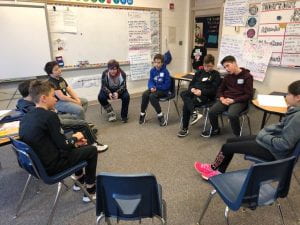
Already, the scientists had so many amazing thoughts! After our science talk was over, they went back to their seats to model (another HUGE focus of our unit) their initial thoughts on how we can smell odors. I was so impressed with their initial models and cannot wait to continue this thinking, investigating, and figuring out!
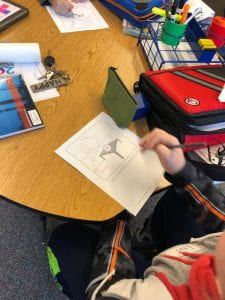
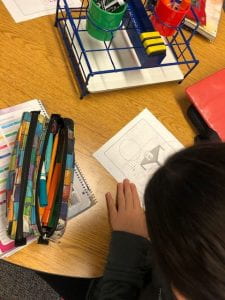
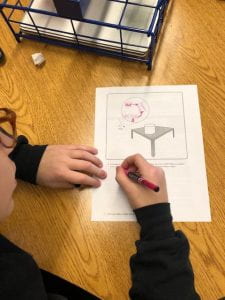


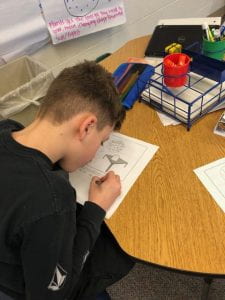


Stay tuned,
Gev. McAdams
This past week we finished up the final lessons of our unit on what causes populations to change by learning about abiotic and biotic factors and how those factors impact an ecosystem.

As always, the 6th grade scientists were given the task of figuring out how abiotic factors affect living things (biotic factors) – in our case, we used worms. The scientists were asked to see how the worms reacted to a dry area vs a wet, damp area. However, before conducting the experiment the scientists were asked the following question – “Why is it necessary to conduct multiple trials of the same experiment?”
The scientists had an answer pretty much immediately. They knew that we had to conduct multiple trials to get accurate evidence. The more times we test something, the more we minimize the impact of errors.
Because of this reasoning we knew we had to test our worms multiple times.
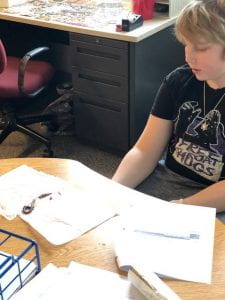
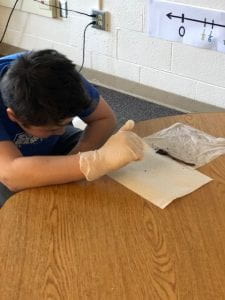

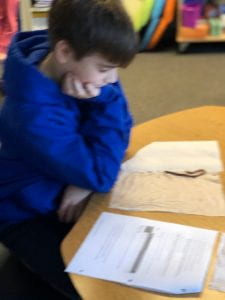

Through each of our 9 scientists 6 trials we were able to conclude that the worms preferred the damp environment over the dry environment. Although, a few worms really enjoyed the cold table.
Along with this, it allowed us to understand better how abiotic factors like a damp or dry environment can really impact biotic factors in an ecosystem. This lead to the scientists making connections – for example, many of them mentioned how plastic (an abiotic factor) can badly affect many of the organisms in that same ecosystem (a biotic factor).
The scientists will have an assessment on our unit next Monday. They have worked so hard and I have loved being a part their rich discussions and ideas.
Our next unit coming up is focused on chemistry where students will be investigating the question, “How Can I Smell Things from a Distance?”
Stay Tuned!
Happy Monday,
Gev. McAdams
The 5th grade scientists might be tired this week because of all the modeling we have been doing as we continue to dive deeper into discovering what matter is and how it affects organisms.
So far, through experimentation we have figured out the following:

How do we know for sure that air and water give the plants matter? Well because we weighed both air and water and we know that anything that takes up space or has mass is MATTER! When we blew air into the balloon and its weight increased, that PROVED it is matter. We also know that when we add water to something, its weight also increases, which once again PROVES it is matter!
But what about light?????????
Light does not take up space, it does not have mass (we shined light onto a scale and the scale stayed at 0.00 grams), so how on earth can it help our plants grow? Stay tuned because we are going to be investigating this idea next week!
Take a look at some of the amazing modeling/thinking the 5th grade scientists have been doing this week.
Modeling air in a syringe:(compressed, expanded, vs open)

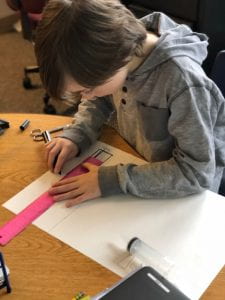

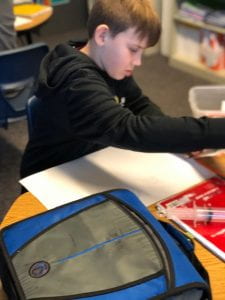

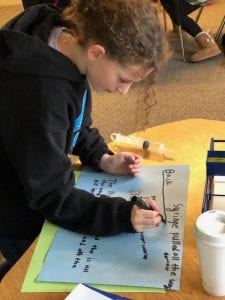

Modeling how/where plants get their matter from to grow:


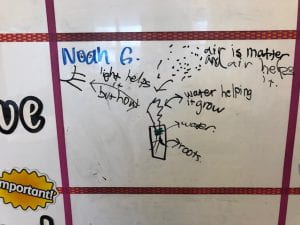
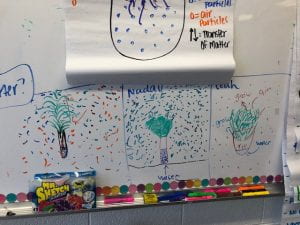
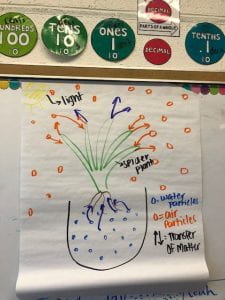
Have a wonderful weekend,
Gev. McAdams



























